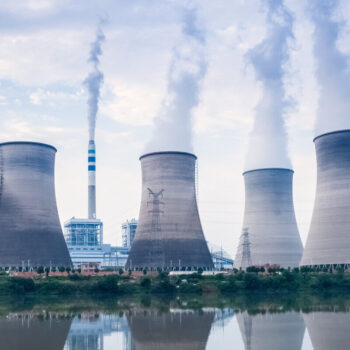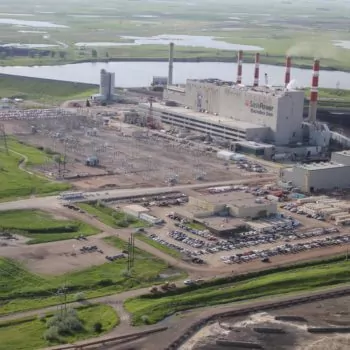The concluding communiqués of multilateral meetings are painstakingly negotiated. Each party comes with their own red lines of objections and wish lists of priority issues. The outcome depends both on the level of alignment among participants, but also on the skills and intentions of the chair: national priorities inevitably form part of Presidency positions.
This year Japan holds the Presidency of the G7, which impacted negatively on expectations for any breakthrough agreements at the Climate and Energy Ministerial meeting in Sapporo on 15-16 April. Japan has consistently been the worst performing member of the G7 across multiple indicators of policy progress, including every edition of E3G’s historical G7 Coal Scorecard series from 2015-2021.
So, the ministerial in Sapporo was unlikely to be the moment when Japan suddenly agreed to an accelerated phase-out of coal power generation by 2030, despite other members of the G7 continuing to put this benchmark on the agenda for discussion. Instead, it is more instructive to look at where the G7 was able to make progress – and to unpick where there were differences between the members.
Here are the top five outcomes from the 2023 G7 ministerial that demonstrate continued progress on the global transition from coal to clean energy:
1. The necessity of decarbonising power sector by 2035 is locked in
“We recall the 2022 G7 Leader’s Communiqué and reaffirm our commitment to achieving a fully or predominantly decarbonized power sector by 2035.”
The fight continues over whether power sector decarbonisation should be fully achieved by 2035 – as pushed by the G6 – or predominantly achieved, as sought by an increasingly isolated Japan. The specific timeline for when to phase out coal will continue to be a bone of contention within this overall direction of travel.
2. The central importance of deploying solar and wind power is now recognised
“A collective increase in offshore wind capacity of 150GW by 2030 based on each country’s existing targets and a collective increase of solar PV to more than 1TW by 2030.”
The G7’s willingness to name specific targets for deploying solar and wind power for the first time shows the growing confidence of governments that they can deliver clean power at scale – also reflected in increasing calls for global renewables targets.
3. Power sector transition is contextualised within movement away from fossil fuels more broadly
“We underline our commitment, in the context of a global effort, to accelerate the phase-out of unabated fossil fuels so as to achieve net zero in energy systems by 2050 at the latest.”
What started as G7 discussions on power sector decarbonisation is now a broader recognition that an accelerated transition away from all uses of unabated fossil fuels is necessary. Definitions of what constitutes effective abatement are important, see our explainer for more.
4. G6 countries pushed back at Japan’s ammonia co-firing promotion
The final text states that hydrogen and ammonia should be used “notably in hard-to-abate sectors”, and that countries exploring ammonia for power generation will only do so if “this can be aligned with a 1.5°C pathway” and the G7’s “collective goal for a fully or predominantly decarbonized power sector by 2035”.
The G6 pushed back strongly on Japan’s efforts to promote ammonia co-firing with coal, resulting in a final text which sets out multiple restrictions and guardrails. Given Japan’s post-ministerial spin, G6 governments will need to be on guard against future attempts to legitimise ammonia co-firing.
5. No New Coal must be a global goal
G7 agreed for the first time to explicitly call for an end to new coal construction globally, stating:
“We recognize the need to end the construction of new unabated coal-fired power generation (…) We call on and will work with other countries to end new unabated coal-fired power generation projects globally as soon as possible to accelerate the clean energy transition in a just manner.”
There are now less than 97 GW of new coal capacity proposed in the rest of the world outside of China (E3G analysis). The G7 text demonstrates that real-world realities are being internalised by national policy makers.
As the only G7 country planning to build a new coal plant, the G7 commitment means Japan will need to stop issuing new permits for coal power plant construction, and increases the obstacles for the proposed Genesis Matsushima coal power project to proceed.
From G7 to G20 and beyond
UNSG Guterres has placed ‘No New Coal’ as the first specific ask of his ‘Acceleration Agenda’, asking governments to step up their commitments at the UN Climate Summit in September.
G7 members have now stated their willingness to support this effort by working with the remaining 33 countries still considering new coal. This could include financial support (including accelerating renewable energy deployment as an alternative to coal); technical assistance and capacity building; as well as ongoing cooperation with Indonesia, South Africa, and Viet Nam on their Just Energy Transition Partnerships (JETPS).
Recent media reporting indicates that G20 Presidency India may be considering its own domestic commitment to No New Coal beyond projects under construction. Such a step would be doubly significant for both its political signal and real-world impact: India is home to the world’s second largest pipeline of proposed new coal projects at pre-construction stages.
Further progress on the specifics of the transition from coal to renewables is now plausible across G7, G20, and beyond. Diplomatic language matters, but so do real-world trends.


